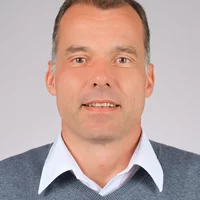The goal
Exotic radionuclides such as for instance 44Ti, 60Fe, 26Al, 10Be and many others are of great interest in several research domains like astrophysics, nuclear medicine, geophysics, fundamental nuclear physics or radioactive beam facilities. In the following, some examples are mentioned:
1. Astrophysics, nuclear and basic research
In the area of astrophysics, for example topics related to the origin of the chemical elements, which is mandatory for describing galactic evolution and, hence, for our understanding of the history of the universe, are subjects for investigation. Radioactive beam facilities are a tool for studying basic nuclear reactions. Besides the online production of the desired radioactive isotope, extraction and post-accelerating (so-called ISOL technique, carried out for instance at CERN ISOLDE or CYCLONE at the CRC/UCL), also offline technology by use of an ECR source is applied. Providing rare radionuclide samples in sufficient amount for such facilities would open new possibilities for studies in the field of fundamental nuclear physics.
2. Accelerator Mass Spectrometry
AMS is a special tool for quantitative measurements of very long-lived radionuclides. This technique consists of counting the nuclides themselves instead of waiting for their decay. As an accelerator is implicated (in most cases a Tandem accelerator), no molecular background exists because of the stripping process. Also, any isobaric background is drastically suppressed by means of nuclear measurement techniques which are involved. Because of its possibility to determine the radioisotopes at the faintest level, in some cases isotopic concentrations down to the range of 10-16, extremely wide applications in different fields are evolved.
3. Laser Mass Spectrometry (RIMS)
Similar considerations as for AMS evolve for the young but growing technique of highly selective laser based mass spectrometry, which utilizes the isobaric and isotopic selective properties of resonant step-wise optical ionization processes. This RIMS technique has not yet achieved the maturity and application range of AMS but can be considered as a somewhat complementary technique, which is expected to contribute in those analytics cases, where AMS encounters experimental limitations. Recent or ongoing RIMS activities concern applications on 26Al, 41Ca, 81,85Kr, 90Sr, 137Cs, 210Pb, 236U and Pu isotopes, preparatory spectroscopic work for 59Ni, 53Mn, 60Fe and rare earth ultra trace isotope determination has been started.
4. Radiopharmacy
About 80% of the worldwide produced radioisotopes are being used for medical purposes. Positron emission tomography (PET) is an important development in this field of the application of nuclear physics to medicine. However, the demand for medical applied isotopes has already changed and will change dramatically in the coming years. New approaches in systemic radioisotope therapy require radionuclides that have different nuclear properties in comparison to those used for diagnostics. The production of all these nuclides in sufficient amounts is very time consuming and extremely expensive. Conventional techniques in commercial radioisotope production - restricted mainly on reactor-based or accelerator-driven production routes - are approaching their limitations. Consequently, alternative production possibilities and ways of cooperation in large basic-physics facilities are discussed. One of these possibilities is the exploitation of accelerator waste.
Proposed collaboration
The Paul Scherrer Institue owns one of the most powerful accelerators in Europe, the ring-cyclotron with 590 MeV proton energy and 1.5 mA beam current. Several long-term-irradiated materials, stemming from beamdumps, targets and shielding equipment, are available at the moment for studies and first preparative work. PSI proposes a four-step-collaboration program:
1. Existing accelerator waste material
At the moment, a copper beam dump is available which was irradiated at the 590 MeV proton beam station at PSI and was dismounted about 10 years ago. From these materials nuclides like 26Al, 59Ni, 53Mn, 60Fe or 44Ti can be separated. Also other irradiated material like carbon (a valuable source for 10Be), stainless steel or concrete is available in small amounts.
2. Target material from the SINQ facility
Two irradiated lead targets from the spallation source are available. Heavier isotopes like 182Hf or several rare earth elements (e.g. 146Sm, several Dy isotopes) can be obtained. In principle, targets from the SINQ will be available every second year.
3. Nuclide extraction from Hg rods
Mercury can also serve as a spallation target for neutron production like lead. In the frame of the EURISOL (EURopean Isotope Separation On-Line Radioactive Ion beam Facility, 6th framework of the EC EURATOM programme) studies for isotope separation from such targets are foreseen. Two already irradiated Hg rods are available for preparing small samples of interesting isotopes. Extended scale is expected with a working EURISOL facility.
4. Special irradiations
The SINQ facility offers the possibility to irradiate materials with 590 MeV protons at special positions. So, tended experiments for isotope production can be offered.
Resume
The 1st ERAWAST workshop, hold from 15th till 17th November 2006 at PSI Villigen, was used to get in contact with interested partners, define the research activities and establish a working program for the next 5 years (e.g. topic 1 and probably 2). The working program consists of objectives realizable with relatively small amounts of material (laboratory scale), test runs, prototypes and development of principal technical solutions. Topics 3 and 4 can be realized only in a long-term frame of about 10 years or more and require the acquisition of financial support from several sources (local from host institutions, EU- and national supported actions, networks, integrated projects and so on) for the realization of large scale technical solutions. Depending on the progresses and demands from science and technology the chemical separation techniques have to be modified and automated, especially in the field of medical application, as well as new suitable equipment will have to be developed. Basic and applied research areas will have to be re-defined. For continuation the collaboration, we applied for a future ESF program called ERIMAST (Exotic Radionuclides from Irradiated Materials for Science and Technology) as a management tool to maintain the contacts, report on recent results, modify the working program and define new objectives.
